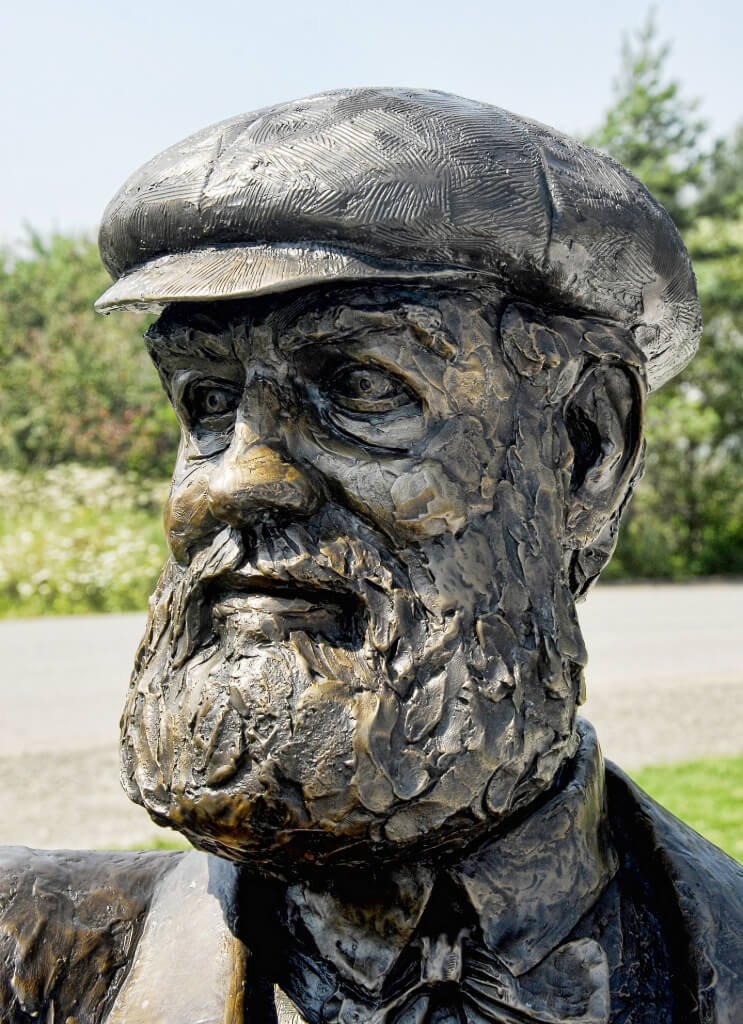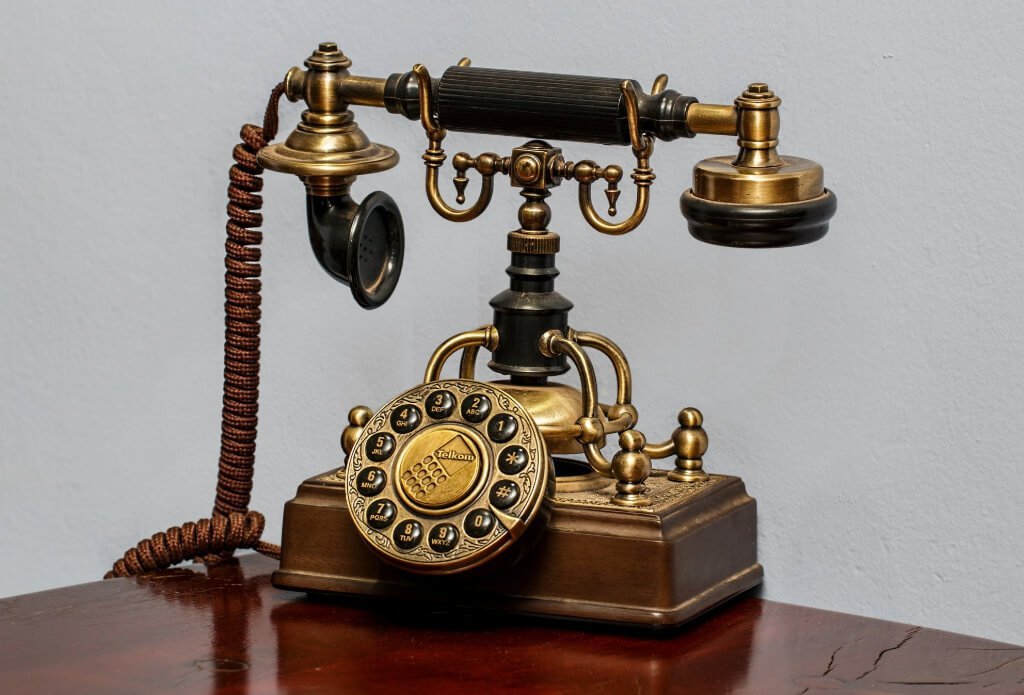Alexander Graham Bell, a name synonymous with innovation and communication breakthroughs, played a pivotal role in shaping the way we connect. Born in 1847 in Edinburgh, Scotland, Bell’s journey from a curious child to a groundbreaking inventor is a testament to human ingenuity.

Early Life And Education
In his formative years, Alexander Graham Bell exhibited an innate curiosity about the world around him. Growing up in a family deeply rooted in elocution and speech, Bell’s fascination with communication and sound took root early on. His education, marked by a blend of traditional learning and hands-on experimentation, laid the foundation for his future endeavors.
Alexander Graham Bell’s journey toward becoming a pioneer in communication technology can be traced back to his early life and the unique influences that shaped his formative years. Born on March 3, 1847, in Edinburgh, Scotland, Bell was immersed in an environment deeply committed to elocution and speech.
Growing up in a family that prioritized communication skills, Bell’s early exposure to the world of sound and language ignited a profound curiosity within him. His mother, Eliza Grace Symonds Bell, was a talented pianist and artist, while his father, Alexander Melville Bell, was a renowned elocutionist and speech teacher. The Bell household was not only a nurturing space for young Alexander but also a fertile ground for the seeds of innovation.
Bell’s formal education began at the Royal High School of Edinburgh, where his inquisitive mind and passion for learning quickly became evident. However, his educational journey took an unconventional turn as he started assisting his father in teaching the deaf. This experience marked the beginning of Bell’s lifelong commitment to addressing communication challenges, especially within the deaf community.
In 1865, at the age of 18, Bell left Scotland for London to further his studies at the University College London. His time there was marked by a diverse range of subjects, including anatomy and physiology, which laid the groundwork for his later work in understanding the mechanics of speech and hearing.
Bell’s educational pursuits led him across the Atlantic to Canada and later to the United States. In Boston, he continued his exploration of sound and communication, ultimately becoming a professor of vocal physiology at Boston University. This academic role provided him with a platform to delve deeper into his passion for communication, setting the stage for the groundbreaking inventions that would follow.
It was during this period that Bell’s interest in the transmission of sound and the possibility of creating a device to transmit speech over long distances began to take shape. His journey from the classrooms of Edinburgh to the lecture halls of Boston laid the foundation for the transformative work that awaited him in the realm of communication technology. The unique blend of familial influence, formal education, and hands-on experiences in teaching the deaf molded Alexander Graham Bell into the inventor who would change the world with his revolutionary contributions.
Invention Of The Telephone
The defining moment in Bell’s life came with the invention of the telephone. 1876 the world was forever changed when Bell successfully transmitted the first intelligible speech over a wire. The words “Mr. Watson, come here, I want to see you” marked the birth of a technology that would revolutionize global communication. The impact of the telephone on society was immediate, connecting people across distances like never before.
Beyond The Telephone: Other Inventions
While the telephone secured Bell’s place in history, his inventive spirit extended beyond this groundbreaking creation. Bell’s interest in multiple disciplines led to innovations in aviation and hydrofoils, showcasing his versatility and wide-ranging impact on scientific advancements.
Alexander Graham Bell’s ingenuity extended far beyond the realms of the telephone, showcasing a multifaceted inventor whose contributions reached various scientific disciplines. While the telephone secured his place in history, Bell’s insatiable curiosity and inventive spirit led him to explore uncharted territories.
One of Bell’s notable ventures beyond the telephone was in the field of aviation. Motivated by a fascination with flight, Bell dedicated considerable time and resources to developing flying machines. In 1907, he founded the Aerial Experiment Association, a group focused on advancing aeronautical engineering. Bell’s experiments with tetrahedral kites and aircraft laid crucial groundwork for future advancements in aviation, influencing the pioneers of flight who followed in his footsteps.

Simultaneously, Bell delved into the world of hydrofoils, demonstrating his versatility as an inventor. His interest in watercraft and the principles of hydrodynamics led to the creation of the HD-4, a record-setting hydrofoil boat. In 1919, piloted by Casey Baldwin, the HD-4 set a world marine speed record, reaching an impressive speed of 70.86 miles per hour. Bell’s innovative approach to transportation extended beyond the skies and into the waters, leaving an indelible mark on the evolution of maritime technology.
In addition to his explorations in aviation and hydrofoils, Bell made significant contributions to the scientific community. His work in the development of the photophone—a device that transmitted sound on a beam of light—demonstrated his commitment to pushing the boundaries of technology. This invention, patented in 1880, paved the way for the modern use of fiber-optic communication, foreshadowing the interconnected world of information exchange.
The breadth of Bell’s inventions speaks to his ceaseless curiosity and determination to leave a lasting impact on various scientific fronts. While the telephone was undoubtedly his most influential creation, Bell’s forays into aviation, hydrofoils, and optical communication showcased a visionary mind unafraid to explore the uncharted territories of innovation. In each venture, Alexander Graham Bell’s inventive spirit left an enduring legacy, influencing subsequent generations of inventors and shaping the trajectory of technological progress.
The Bell Telephone Company
To capitalize on the success of the telephone, Alexander Graham Bell co-founded the Bell Telephone Company. The company’s rapid expansion and challenges faced along the way mirrored the growing pains of an industry in its infancy. The legacy of the Bell Telephone Company endures, having laid the groundwork for the modern telecommunications landscape.
Humanitarian Efforts
Beyond his technological contributions, Bell was a champion of humanitarian causes. His advocacy for the deaf, including the invention of the audiometer, demonstrated a commitment to improving the lives of others. Bell’s dedication to education and philanthropy left an indelible mark on society.
Controversies And Criticisms
However, Bell’s legacy is not without its controversies. Legal disputes and debates over patent rights marked certain chapters of his life. Critics questioned the ethical implications of some of his actions, adding nuance to the narrative of his contributions.

Lasting Legacy
Despite controversies, Alexander Graham Bell’s impact on communication technology is undeniable. His inventions paved the way for the interconnected world we live in today. Bell’s legacy continues to resonate in the work of subsequent inventors and remains a testament to the enduring power of innovation.
The Evolution Of The Telephone
Throughout history, communication has been a vital aspect of human interaction, enabling the exchange of ideas, information, and emotions across vast distances. One of the most significant advancements in this regard is the invention of the telephone. This article delves into the fascinating journey of how Alexander Graham Bell’s invention revolutionized communication, shaping the way we connect.
The Pre-Telephone Era
Before the telephone, communication was limited to handwritten letters, telegrams, and face-to-face interactions. These methods were often time-consuming, unreliable, and restricted to specific locations. The need for a more efficient means of communication became increasingly evident as society progressed.
Invention Of The Telephone
In 1876, Alexander Graham Bell, a Scottish-born inventor, patented the first practical telephone. Bell’s invention stemmed from his interest in sound and speech transmission, leading to the development of a device that could transmit voice signals electrically. Through experimentation and innovation, Bell successfully created a device that would forever change the way we communicate.
Early Adoption And Impact
Initially met with skepticism, the telephone gradually gained acceptance as people recognized its potential. Early adopters, including businesses and households, experienced firsthand the convenience and immediacy of the new technology. The telephone quickly became indispensable, facilitating faster communication and enabling real-time conversations over long distances.
Technological Advancements And Expansion
In the years following its invention, the telephone underwent significant technological advancements. Improvements in transmission quality, the introduction of switchboards, and the expansion of telephone networks contributed to the widespread adoption of the technology. Bell’s invention laid the groundwork for the development of global communication networks, connecting people across continents.

Cultural And Social Implications
The telephone’s impact extended beyond its technical capabilities, influencing social interactions and cultural norms. As the telephone became more commonplace, it transformed the way people communicated, fostering closer connections and bridging geographical barriers. Representations of the telephone in art, literature, and popular culture further underscored its significance in society.
Challenges And Controversies
Despite its numerous benefits, the telephone also presented challenges and controversies. Privacy concerns emerged with the rise of wiretapping, prompting debates over surveillance and civil liberties. Accessibility issues, such as the digital divide, highlighted disparities in access to telecommunications infrastructure. Regulatory challenges necessitated the development of telecommunication laws to address emerging issues.
The Modern Telephone Era
The advent of mobile phones marked a significant shift in telephone technology, offering greater mobility and convenience. Smartphones, equipped with advanced features and connectivity options, further transformed communication habits. As technology continues to evolve, the future of the telephone holds promise with developments such as 5G networks and AI integration.
The invention of the telephone by Alexander Graham Bell heralded a new era of communication, paving the way for unprecedented connectivity and collaboration. From its humble beginnings to its present-day advancements, the telephone remains a cornerstone of modern society, shaping how we interact and communicate. As we look to the future, the legacy of the telephone serves as a testament to the enduring power of innovation.
Inside The Alexander Graham Bell Museum
Nestled within the realms of history and innovation lies the Alexander Graham Bell Museum, a tribute to one of the most influential figures in modern communication. Alexander Graham Bell, renowned for inventing the telephone, left an indelible mark on society with his pioneering spirit and groundbreaking inventions. The museum stands as a testament to his legacy, offering visitors a journey through time to explore his life, inventions, and enduring impact.
Alexander Graham Bell: A Visionary Ahead Of His Time
Born in 1847 in Scotland, Alexander Graham Bell was a visionary whose curiosity and ingenuity propelled him into the annals of history. While he is most famously known for his invention of the telephone in 1876, Bell’s contributions extend far beyond telecommunications. His relentless pursuit of knowledge led to innovations in fields ranging from aviation to medical research. The Alexander Graham Bell Museum serves as a platform to celebrate his multifaceted genius and the far-reaching implications of his work.
The Birth Of A Museum: Tracing The Origins
The inception of the Alexander Graham Bell Museum dates back to the late 20th century, driven by a collective desire to preserve and honor Bell’s legacy. Established in [insert year], the museum emerged as a beacon of inspiration and education, attracting visitors from around the globe. Over the years, it has evolved into a comprehensive repository of artifacts, documents, and interactive exhibits, offering visitors a comprehensive insight into Bell’s life and work.
Navigating Through The Museum: Exhibits And Artifacts
Upon entering the Alexander Graham Bell Museum, visitors are greeted by a captivating array of exhibits and artifacts showcasing the evolution of communication technology. From early prototypes of the telephone to personal belongings belonging to Alexander Graham Bell himself, each display offers a glimpse into the ingenuity and creativity of one of history’s greatest minds. Interactive exhibits allow visitors to engage with Bell’s inventions firsthand, fostering a deeper understanding of their significance in shaping the modern world.
Immersive Experiences: Interactive Displays And Demonstrations
One of the highlights of the Alexander Graham Bell Museum is its immersive experiences, which transport visitors back in time to pivotal moments in history. Interactive displays allow visitors to explore the inner workings of Bell’s inventions, while hands-on demonstrations offer a firsthand experience of their functionality. Whether it’s listening to the first-ever telephone conversation or witnessing the transmission of sound waves, these experiences leave a lasting impression on visitors of all ages.

Beyond The Inventor: Exploring Bell’s Personal Life And Philanthropy
While Alexander Graham Bell’s contributions to science and technology are widely celebrated, the museum also offers insight into his personal life and philanthropic endeavors. From his deep-rooted love for his family to his unwavering commitment to improving the lives of others, Bell’s legacy extends far beyond his inventions. The museum pays homage to his humanitarian spirit, inspiring visitors to reflect on the importance of compassion and empathy in shaping a better future.
Preserving History: Conservation Efforts And Challenges
The preservation of historical artifacts is a cornerstone of the Alexander Graham Bell Museum’s mission. Through meticulous conservation efforts, the museum ensures that Bell’s legacy remains intact for future generations to explore and appreciate. However, preserving delicate materials presents its own set of challenges, from environmental factors to the natural degradation of aging artifacts. Despite these obstacles, the museum remains steadfast in its commitment to safeguarding history for posterity.
The Museum’s Role In Education And Research
Education lies at the heart of the Alexander Graham Bell Museum, with a myriad of programs and resources aimed at inspiring curiosity and fostering innovation. From guided tours for school groups to research fellowships for aspiring scholars, the museum provides a platform for learning and discovery. By engaging with Bell’s legacy, visitors are empowered to think critically, ask questions, and explore new avenues of inquiry in the field of communication technology.
The Legacy Lives On Continuing Influence And Future Prospects
As the world continues to evolve, the legacy of Alexander Graham Bell remains as relevant and impactful as ever. His spirit of innovation and perseverance serves as a guiding light for future generations of inventors and visionaries. Looking ahead, the Alexander Graham Bell Museum remains committed to preserving and celebrating his legacy, ensuring that his contributions to society are never forgotten.
The Alexander Graham Bell Museum stands as a testament to the enduring legacy of one of history’s most remarkable individuals. Through its exhibits, interactive displays, and educational programs, the museum offers visitors a unique opportunity to explore the life and work of Alexander Graham Bell. As we reflect on his contributions to science, technology, and society, we are reminded of the power of human ingenuity to shape the world for the better.
Final Thoughts
Alexander Graham Bell’s journey from a curious child to a revolutionary inventor has left an indelible mark on the fabric of human communication. His inventions not only connected voices across distances but also transcended time, influencing generations to come.
FAQs
How Did Alexander Graham Bell’s Early Life Influence His Inventions?
Bell’s upbringing in a family deeply involved in elocution and speech laid the groundwork for his fascination with communication. This early exposure shaped his inventive spirit and eventual breakthroughs in the field.
What Controversies Surrounded Bell’s Inventions?
Legal disputes over patent rights and debates on the ethical implications of certain actions created controversies around Bell’s legacy. These aspects, while contentious, offer a more comprehensive understanding of his contributions.
How Did Bell’s Humanitarian Efforts Contribute To Society?
Bell’s advocacy for the deaf, demonstrated through inventions like the audiometer, and his commitment to education showcased a philanthropic side that went beyond technological innovation, leaving a lasting impact on society.
Who Was Alexander Graham Bell?
Alexander Graham Bell was a Scottish-born inventor known for inventing the telephone.
What Year Was The Telephone Invented?
The telephone was invented in 1876 by Alexander Graham Bell.
How Did The Invention Of The Telephone Impact Society?
The invention of the telephone revolutionized communication, enabling faster and more efficient exchange of information over long distances. It facilitated closer connections between individuals and businesses, transforming social interactions and cultural norms.
What Are Some Challenges Associated With Telephone Technology?
Some challenges associated with telephone technology include privacy concerns, accessibility issues, and regulatory challenges. These include concerns over surveillance, disparities in access to telecommunications infrastructure, and the need for regulatory frameworks to address emerging issues.
What Are The Museum’s Operating Hours?
The Alexander Graham Bell Museum is typically open [insert hours] days a week. However, it’s advisable to check the museum’s official website for the most up-to-date information on operating hours and any temporary closures.
Is The Museum Suitable For Children?
Absolutely! The museum offers a range of interactive exhibits and hands-on activities that are engaging for visitors of all ages. Additionally, guided tours tailored for younger audiences are available to enhance the overall experience.
Can I Take Photographs Inside The Museum?
Photography policies may vary depending on the exhibits and displays. Generally, non-flash photography is permitted in designated areas of the museum. However, it’s always best to check with museum staff or refer to posted signage for specific guidelines.
Is There A Gift Shop On Site?
Yes, the Alexander Graham Bell Museum features a gift shop where visitors can purchase a variety of souvenirs, books, and educational materials related to Bell’s life and inventions. Proceeds from the gift shop help support the museum’s ongoing preservation efforts.
Also Read: Unveiling The Shocking Truths And Brilliance Of Thomas Edison Life!
